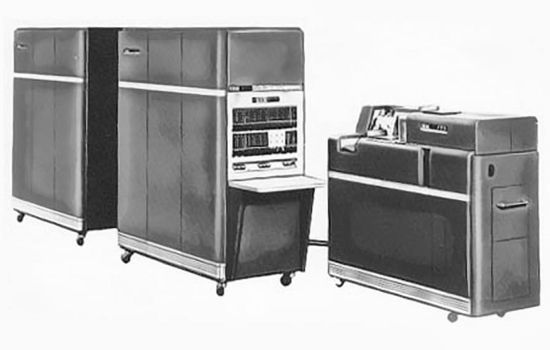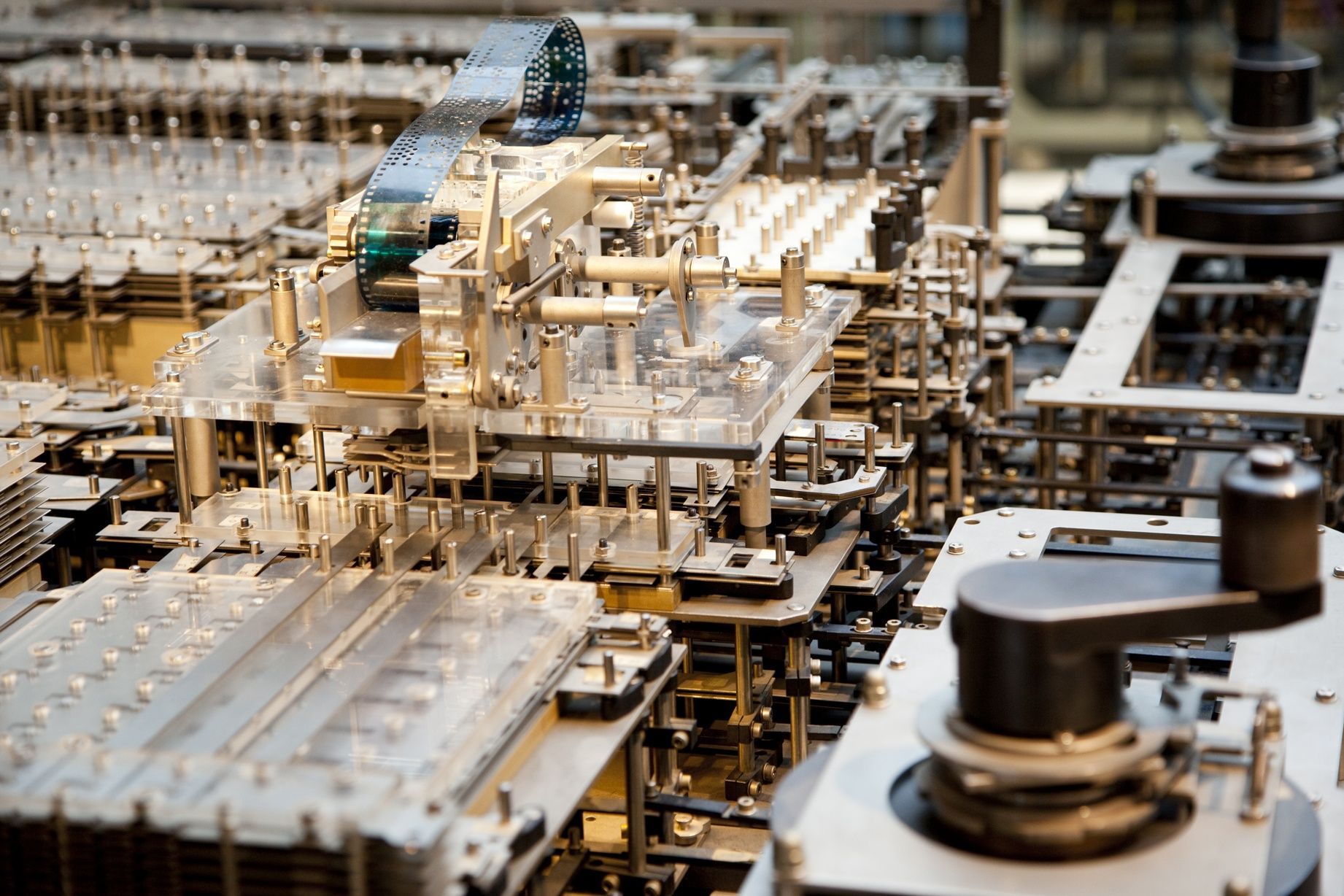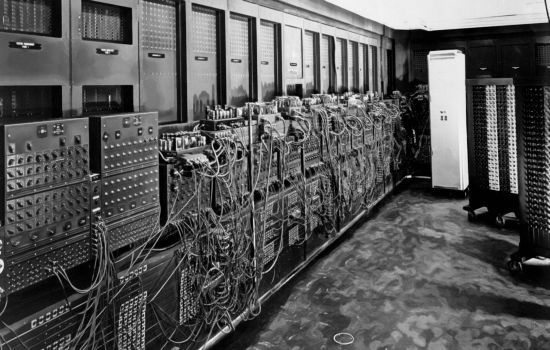C:\Games\DarkAges\Main_Computers



IBM 650
IBM’s entry into the computer business

Nachdem die Firma IBM längere Zeit mit Zähl- und Addiermaschinen auf dem Markt hatte, wurde 1946 der Rechenstanzer IBM 604 entwickelt. Der Nachfolger des IBM 604 dann bereits ein Rechenwerk mit 1400 Elektroröhren und wurde mit Hilfe einer Schalttafel gesteuert. Um Umfangreiche Programme nutzen zu können, wurden Lochkarten für die Programme genutzt. 1949 wurde dann der CPC (Card Programmed Calculator) entwickelt. Computer im eigentlichen Sinne waren dies allesamt allerdings noch nicht.
Erst mit dem Großrechner, dem IBM 650, stieg IBM groß ins Computergeschäft ein. Zwischen 1953 und 1962 wurden 2000 Einheiten des IBM 650 verkauft, was es zum ersten massenproduzierten Computer der Welt machte.
After the company IBM had a longer time with counting and adding machines on the market, the calculator punch IBM 604 was developed in 1946. The successor of the IBM 604 then already a calculator with 1400 electric tubes and was controlled with the help of a control panel. In order to be able to use extensive programs, punched cards were used for the programs. In 1949 the CPC (Card Programmed Calculator) was developed. However, these were not yet computers in the true sense of the word.
It was not until the mainframe computer, the IBM 650, that IBM entered the computer business in a big way. Between 1953 and 1962, 2000 units of the IBM 650 were sold, making it the world’s first mass-produced computer.
It was a computer that was easy to program via main memory and still used the biquinary decimal code. The biquinary decimal code used a binary and a quinary component, as different variations were used as coding schemes at the time. IBM introduced the IBM 650 code for this purpose. The machine was intended for scientific use as well as for users of classical tabulating machines. As early as 1952, the IBM 701 mainframe computer was delivered, but it was intended more for scientific purposes. Its introduction, however, ushered in the transition to the fully electronic computer.

Table of contents
| YR | NAME | INVENTOR |
|---|---|---|
| — | Introduction |  |
| 1938 | Z1 – Z4 |  |
| 1941 | Atanasoff Berry Computer |  |
| 1943 | Harvard Mark I |  |
| 1943 | Colossus |  |
| 1945 | Whirlwind |  |
| 1946 | ENIAC |  |
| 1950 | IBM 650 |  |
| 1951 | UNIVAC |  |
| 1954 | TRADIC |  |
| 1960 | PDP-1 |  |

